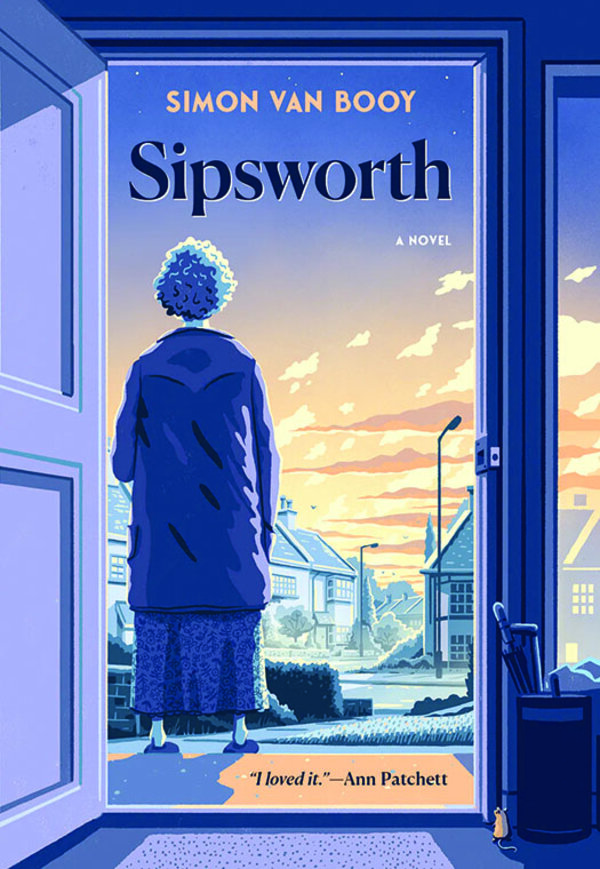In ‘Sipsworth,’ a mouse helps a widow conquer loneliness
Loading...
Like an inverted telescope, “Sipsworth” focuses attention on a world made quite small. Simon Van Booy’s novel concerns an 80-something woman who’s returned to the English town of her youth.
Helen Cartwright is a widow, and her only child, for reasons best left for readers to learn, is absent. Helen sees her homecoming as a harbor of the familiar, and a life devoid of the unplanned is exactly what she wants. Suddenly made lonely after a full and adventurous life, Helen has come to think of change as a kind of rupture, with routine as the only refuge from a broken heart.
Her days unfold to the teakettle’s whistle in the morning and the telly’s lineup of old movies in the afternoon. It’s a hermit’s existence, a solitude so sealed by habit that no one else can get in.
No one, that is, except a tiny mouse, who slips in with some odds and ends that Helen has reclaimed from a neighbor’s curb. Since it won’t do to have a rodent in the house, Helen treks to the hardware store for pest control supplies, planning an extermination that, through a comedy of errors worthy of Wile E. Coyote and the Road Runner, she can’t complete.
Grudgingly resigned to life as a mouse owner, Helen seeks out pet care advice at the local library, connecting with a reference librarian and her son. They help her learn about her new charge, whom she names Sipsworth because of the dainty way he drinks.
Through shifts as gradual as shadows tracing a sundial, Helen’s cramped world slowly cracks open to admit other souls. What emerges seems like a grown-up version of “If You Give a Mouse a Cookie,” the celebrated children’s story in which one small thing done for the title character triggers a daisy chain of obligation.
If “Sipsworth” invites thoughts of bedtime stories, it’s perhaps because this novel, for all its suggestion of real life, sometimes seems to read like a fable. When a crisis puts Sipsworth in danger, the resolution strains credulity, but Van Booy’s yarn proves so appealing that readers will suspend disbelief.
Another obvious point of comparison is “A Man Called Ove,” Fredrik Backman’s 2012 novel, twice adapted for film, about a widower nudged into friendship by a series of unexpected encounters. “Sipsworth” shares a similar life-affirming message, although Helen isn’t quite the know-it-all we’re given with Backman’s wry title hero. We learn that Helen is something more than a “little old lady” with a love of movies.
“Sipsworth” would make a nice movie itself. Van Booy has an eye for cinematic detail, as when he describes Helen’s approach to a winter window: “She bends to the cold glass but loses the street in a sudden flower of breath.”
Hollywood might also, one gathers, embrace the topicality of Van Booy’s subject matter. His tale of a sad senior citizen redeemed by society resonates with particular urgency these days, with worries about loneliness very much a part of the public conversation.
It would be a mistake, though, to think of “Sipsworth” merely as a useful parable about the ravages of social isolation and the healing power of community. This is a book to read as much for pleasure as for instruction, and Van Booy, a master stylist, gives us plenty to savor. There are beautiful sentences on every page.
Here, the scrupulously private Helen decides to poke around in the wee hours: “Ensuring there is no one outside, she pulls on her coat and drops into the stomach of night.” And here, with perfect precision, Van Booy describes a wet English afternoon: “The world outside is soft and dripping. The radio is still on and piano music tinkles through the house like another sort of rain.” Another passage points to the irony of TV, a kind of global campfire, making Helen feel even more alone: “Now the television went on all night. An endless loop of voices. Even if there was no one in the studio or watching at home, it kept on, seeking to fill the emptiness but only intensifying it.”
Van Booy’s gift for language is immersive, creating a world as artfully self-contained as a snow globe. A reader might feel content to stay there forever, though “Sipsworth” offers a gentle caution against life apart from the crowd. This is a memorable story about serendipity – and what can happen when we keep our hearts open to surprise.









